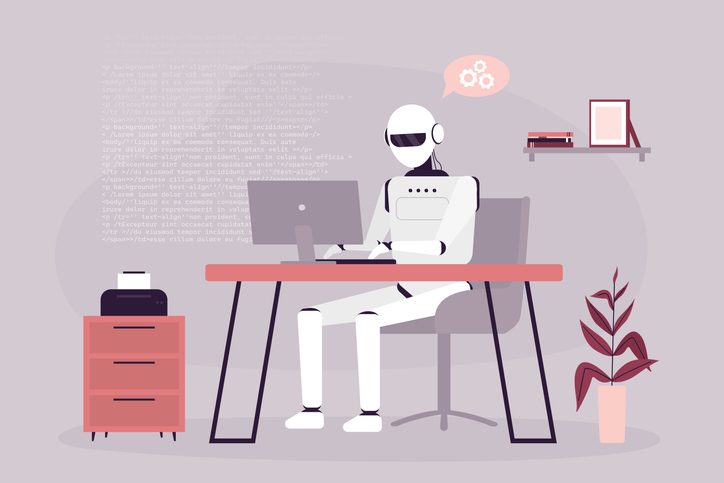
TL;DR:
AI agent onboarding is now a critical part of product design. This article breaks down what SaaS teams need to know to successfully onboard autonomous AI agents—from defining their role and permissions to designing agent-friendly interfaces and training them to enhance usability, not break it. Thoughtful onboarding improves adoption, reduces churn, and turns AI into a strategic asset — not a UX liability.
What it takes to make AI agent onboarding successful, and why your product’s usability (and adoption rate) depends on getting it right
Hello, AI Agent. Welcome to the company.
On a bright Tuesday morning in Dallas, an AI agent clocked in.
It wasn’t handed a badge. It didn’t need a desk. But it had a role, and expectations were high. The agent — call it Nova — had been built to triage customer requests for a growing health tech platform. It could parse human language, cross-reference internal knowledge bases, and decide, in milliseconds, what needed a human touch and what it could resolve on its own.
Nova’s arrival was quiet, seamless even. Customers noticed shorter wait times. Agents noticed fewer repetitive tickets. But behind the scenes, getting Nova “onboarded” had been anything but easy.
This kind of seamless deployment is the holy grail of AI agent onboarding — and it rarely happens by accident. When done right, onboarding not only prevents costly errors but can directly improve usability, speed up adoption, and reduce support burdens across your product.
Because here’s the thing: AI agents don’t walk in ready to go. They don’t read the employee handbook over lunch. They don’t ask for help when something seems off. They operate with confidence—even when they’re wrong.
And that’s why the new frontier in AI isn’t just building smarter agents. It’s teaching them how to do their jobs inside complex systems that were never designed for autonomous coworkers. It’s onboarding.
Meet your newest colleague: AI agent onboarding starts with understanding
We used to call them bots. The helpful script that confirmed your flight or answered a shipping question. Today’s AI agents are far more sophisticated. They can reason, learn, and act independently to meet goals. They don’t just respond. They decide.
They also work differently than traditional software. You don’t tell them exactly what to do. You give them a job and the access to do it. That’s powerful. And potentially dangerous.
“AI agents are the interns who never ask questions,” said one CTO we interviewed. “They do what they think is right. And sometimes, they’re spectacularly wrong.”
That’s why onboarding matters. It’s not about flipping a switch. It’s about creating the environment, the rules, and the supervision needed for these agents to thrive safely.
AI agent onboarding is not deployment
Imagine if your newest employee started answering emails without knowing what your product does. Or accessed customer records without permission. Or made decisions based on training from a competitor’s handbook.
That’s what can happen when you skip onboarding for AI.
Effective AI agent onboarding is less about giving access and more about shaping behavior — teaching the agent what “good” looks like, and aligning its actions with the product experience you want your users to have.
Proper onboarding includes:
- Setting role boundaries
- Defining access permissions
- Training on system architecture
- Ensuring secure communication
- Monitoring behavior over time
It’s not just IT setup. It’s digital orientation, and it’s critical.
What we can learn from HR
Surprisingly, the best metaphor for onboarding AI agents comes from human resources. Just like new hires, AI agents need to be introduced to the systems, culture, and workflows of an organization. They need context.
You wouldn’t assign someone to finance and hope they “figure it out.” You’d give them documentation, role-specific training, and probably a buddy.
AI agents need the same structure. Except instead of a buddy, they might get a sandboxed environment and carefully tuned reward functions.
The homework before the handshake
Before an AI agent ever enters your system, there’s prep work.
First, define the problem it’s solving. Not “do AI things,” but specifics: reduce call wait times, generate weekly reports, flag unusual spending.
Next, determine what data it needs to succeed — and what data it should never see. This means cleaning, labeling, and curating datasets that reflect real-world use.
Then comes model selection. A lightweight rule-based model might be fine for password resets. For fraud detection? You’ll need something more robust — maybe a fine-tuned large language model with reinforcement learning capabilities.
In other words, the prep isn’t sexy. But it’s what keeps your future AI coworker from hallucinating its way into chaos.
Without proper AI agent onboarding, even powerful models can become usability liabilities—delivering poor recommendations, creating friction in user flows, or undermining the trust your product experience depends on.
Why AI agent onboarding affects product adoption
- A poorly onboarded agent can introduce friction
- Hallucinations = broken UX
- Confusing interactions = drop-off
- Seamless automation = improved activation, retention, and satisfaction
That’s why AI agent onboarding isn’t just a technical task. It’s a product usability strategy.

Systems built for humans aren’t ready for agents
AI agents don’t read screens or click buttons. They need structured APIs and predictable data formats. But most enterprise systems were built with humans in mind, with messy interfaces, inconsistent outputs, and little thought for machine readability.
That means part of onboarding includes reshaping the digital workspace. Interfaces need to expose the right data in the right format. APIs need to be secure, documented, and structured like they’re talking to something smart — but not omniscient.
Trust but verify
AI agents should never be trusted implicitly. That’s not a statement about ethics. It’s a design principle.
Every action they take — from accessing a file to generating an email — should be scoped, logged, and monitored.
“Permission management isn’t a one-time setup,” says one AI security consultant. “It’s a constant process of reassessment.”
Ideally, each agent has a unique identity. One that allows administrators to see who (or what) did what, when, and why. This helps prevent mistakes, and just as importantly, it helps trace them when they happen.

The training ground: Teaching AI agents through smart onboarding
Training an AI agent is a blend of education and simulation. And while supervised learning is still the bedrock, reinforcement learning is the game-changer.
Agents that learn through trial and error — rewarded for correct behavior, penalized for mistakes — tend to develop more resilient strategies. They adapt.
Some organizations now run agents through digital “boot camps,” where they simulate thousands of hours of work before seeing real users. It’s slow. It’s expensive. It works.
And then there’s Retrieval-Augmented Generation (RAG) — a method that helps agents “consult the manual” in real time by retrieving relevant documents and combining them with model responses. It’s like giving the agent a memory. Or at least a filing cabinet.
Lessons from the field
At Bank of America, the AI agent known as Erica handles over a billion customer requests annually. At JPMorgan, an agent named COiN scans 12,000 legal documents in seconds. These agents weren’t just plugged in — they were carefully trained, gradually introduced, and constantly evaluated.
In health care, Memorial Healthcare System’s voice agent has reduced the workload of front-desk staff. In retail, Burberry’s chatbot has improved conversion rates. These are success stories—but only because the onboarding was deliberate and human-led.
In SaaS products, agent onboarding has directly impacted user adoption. One B2B learning platform saw a 17 percent improvement in new-user engagement after carefully training its AI support agent to explain platform features in plain language, reducing the learning curve and helping users experience value faster.
But what about hallucinations?
They’re still a problem. An agent might invent a policy that doesn’t exist. Or misinterpret a user’s intent in a way that sounds plausible but is catastrophically wrong.
That’s why many organizations now adopt human-in-the-loop systems. AI takes the first pass, but a human confirms it. Or the system only fully automates when confidence is above a certain threshold.
You don’t let your intern send legal emails unsupervised. You shouldn’t let your AI do it either.
Resistance is natural
Not everyone welcomes their new synthetic colleagues with open arms. Employees worry about replacement. Customers worry about trust.
This is where design (and transparency) matters. Agents that explain their reasoning, ask for help when unsure, and admit their limitations build trust faster.
It’s not just about what AI can do. It’s about how we feel about what it’s doing.
The metrics that matter
Speed. Accuracy. Uptime. Satisfaction.
These are the new KPIs — not for your people, but for your AI.
Are they completing tasks faster than before? Are they making fewer errors? Do users prefer the experience?
And when something goes wrong, how fast can you diagnose it?
Just like any employee, AI agents need performance reviews. And maybe even a probationary period.
FAQs about AI agent onboarding
What is AI agent onboarding?
It’s the process of introducing an autonomous AI system into your digital product, including defining roles, setting permissions, training it with the right data, and integrating it securely with your tools and interfaces.
How does AI agent onboarding improve usability?
Proper onboarding ensures agents behave predictably, support user goals, and don’t interrupt key workflows—reducing friction and confusion.
Why is onboarding important for SaaS products?
SaaS tools rely on ease of use and fast adoption. Poorly integrated AI can cause drop-off. Thoughtful onboarding helps users get value faster and stick around longer.
What happens if you skip onboarding?
Untrained or unrestricted AI agents may access the wrong data, confuse users, hallucinate responses, or cause security risks—all of which hurt product usability.
Can a UX team help with AI agent onboarding?
Absolutely. UX strategy and research are key to designing agent workflows, reducing friction, and making sure the AI enhances—not damages—the user experience.
How does AI agent onboarding support product adoption in SaaS?
AI agent onboarding improves adoption by reducing user friction, ensuring accurate agent responses, and aligning automated behavior with your UX goals. A well-onboarded agent builds trust faster, helping users reach value sooner and stick around longer.
The path forward
We’re at the beginning of a new era. One where AI doesn’t sit behind the scenes, but works shoulder-to-shoulder with humans. That future isn’t about automation. It’s about collaboration.
But collaboration requires trust. And trust comes from process.
AI agent onboarding isn’t just an IT task. It’s a business strategy. One that will increasingly determine whether AI elevates your organization or accidentally burns it down.
So the next time someone tells you they’ve “implemented an AI agent,” ask them this:
How did you handle AI agent onboarding?
Because in today’s UX-driven, AI-powered product landscape, onboarding isn’t just about setting permissions—it’s how you improve usability, accelerate adoption, and build trust with your users.
Ready to onboard an AI agent into your product?
Whether you’re integrating your first AI feature or scaling a complex agentic system, onboarding is where UX makes or breaks success. At Standard Beagle, we help B2B SaaS teams design and implement AI experiences that users trust and adopt.
Let’s make your AI feel like part of the team — not a liability.











